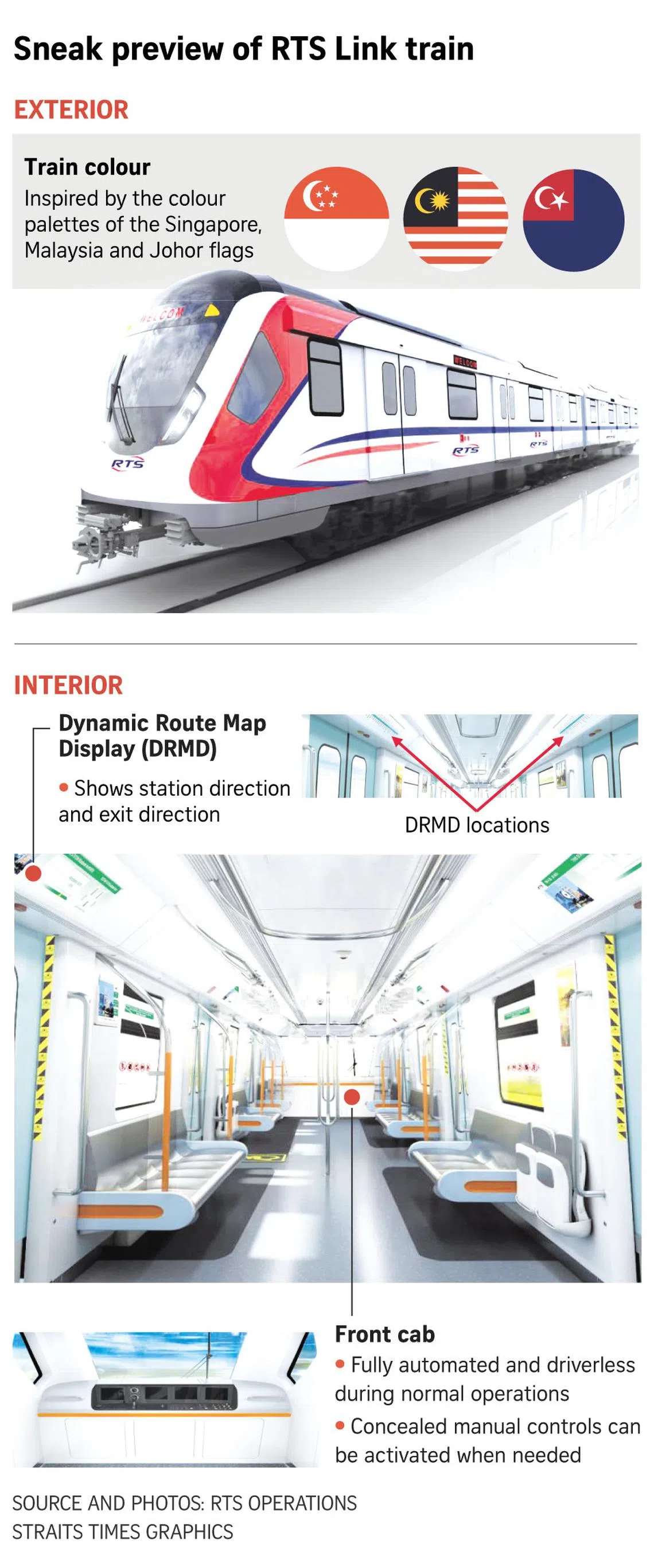First of 8 Johor Bahru-Singapore RTS Link trains unveiled; system works 56% done
Sign up now: Get ST's newsletters delivered to your inbox
Follow topic:
SINGAPORE – The first of eight driverless trains that will serve the upcoming Johor Bahru-Singapore Rapid Transit System (RTS) Link was unveiled in Singapore on June 30, and it will be put through its paces at an $800 million testing centre in Tuas from July.
The delivery marks the latest milestone for the highly anticipated cross-border rail link
The unveiling of the new 76.5m-long, four-car train was commemorated at an event at the Singapore Rail Test Centre (SRTC)
“The RTS Link is more than a transportation system and it is more than an engineering milestone,” said Datuk Khairil Anwar Ahmad, chairman of RTS Operations (RTSO), a joint venture between Singapore transport operator SMRT and Malaysian public transport firm Prasarana that was appointed to run the rail line.
“It is actually a powerful symbol of our partnership that will deepen bilateral relations between both Malaysia and Singapore,” he added.

Acting Transport Minister Jeffrey Siow (centre), with his Malaysian counterpart Anthony Loke (right) and Johor Chief Minister Onn Hafiz Ghazi (left) at the commemorative event on June 30.
ST PHOTO: KEVIN LIM
Overall, works to install the RTS Link’s systems are now 56 per cent complete, RTSO said on June 30.
These include track installation, which is expected to be completed by the end of July, as well as the installation of the traction power system, which supplies the electricity that powers the trains.
When operational, RTS Link trains will travel at a maximum speed of 80kmh, carrying up to 10,000 people an hour in each direction.
The service will run from 6am to midnight daily, with a peak-hour frequency of 3.6 minutes. The journey will take about five minutes.
Each of the eight RTS Link trains, made by Chinese manufacturer CRRC Zhuzhou Locomotive, has an optimal capacity of 607 passengers and a maximum of 1,087. Each train car has 32 seats, including four that can be folded to make space for a wheelchair, a pram or luggage.

Each train car has 32 seats, including four that can be folded to make space for a wheelchair, a pram or luggage.
ST PHOTO: KEVIN LIM
The trains come with other accessibility features, including a hearing induction loop system that uses a magnetic field to transmit public announcements directly to the hearing aids of passengers who use such devices.
It is the first time such a system is being rolled out on a train in Singapore and Malaysia, so that broadcasts can be heard clearly by those who have hearing impairments without background noise and distortion.
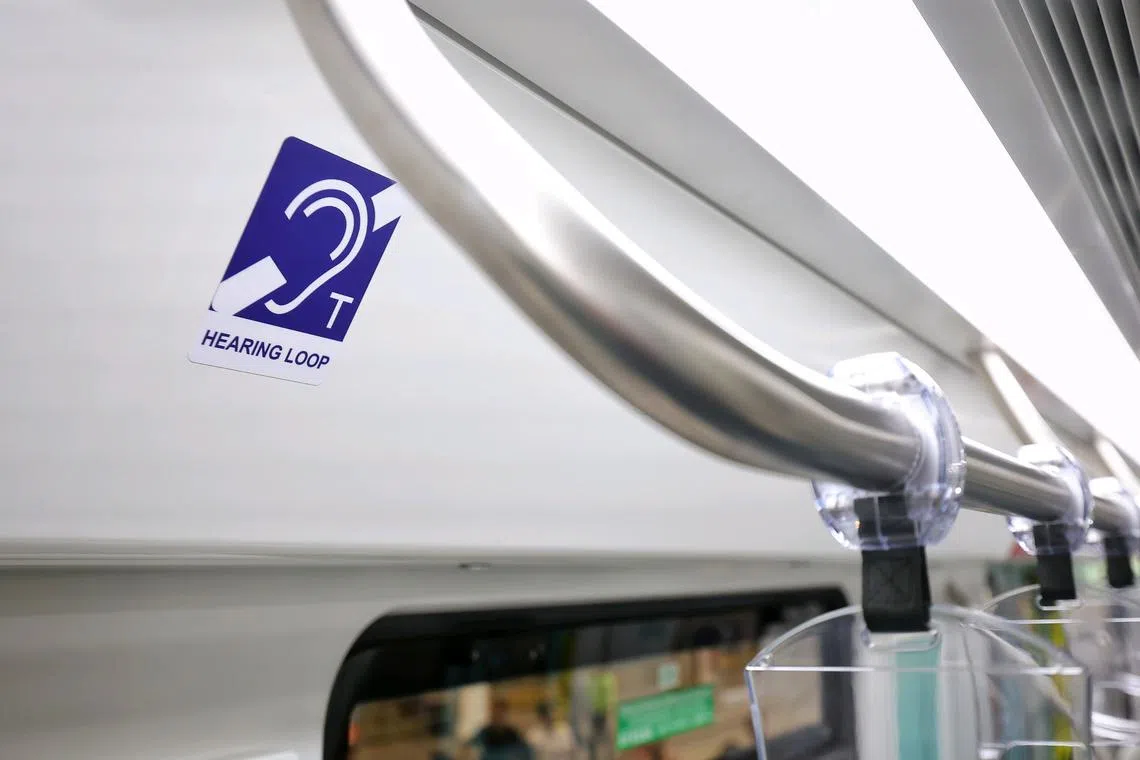
The hearing induction loop system transmits announcements to the hearing aids of passengers on the train.
ST PHOTO: KEVIN LIM
In the event of an emergency, passengers can use a call button to speak to the operations control centre.
They can also evacuate by opening one of several red hatches with a lever to open the train doors. Opening the hatch will send an alarm to the operations control centre, and the lever can be used only when the train comes to a standstill.
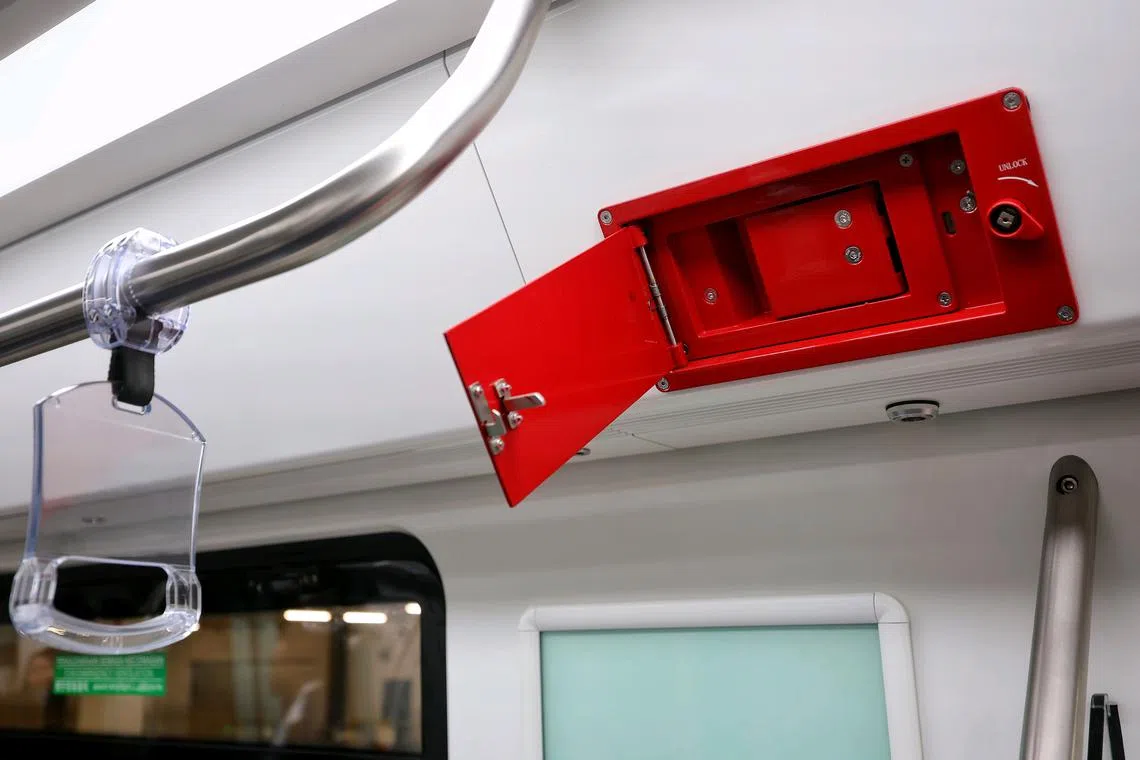
Passengers can evacuate by opening one of several red hatches that holds a lever to open the train doors.
ST PHOTO: KEVIN LIM
Only the doors that face an emergency walkway along the RTS Link’s viaducts and tunnels can be opened.
There are also smoke and fire detectors on the train, and hopper windows that can be opened to allow fresh air into the cabin.
The RTS Link train, which arrived in Singapore in April, is expected to undergo tests that ensure it works well with other rail systems, such as signalling and platform screen doors. These tests are expected to be completed in the fourth quarter of 2025.
“Carrying out an initial round of off-site testing at SRTC allows RTSO to identify and resolve potential integration issues early before commencing testing of the trains on the RTS Link tracks,” said Singapore and Malaysia’s transport ministries in a joint statement.

The first RTS Link train, which arrived in Singapore in April, is expected to undergo tests that ensure it works well with other rail systems.
ST PHOTO: KEVIN LIM
After testing at SRTC, the first train will be moved to the RTS Link tracks between Singapore’s Woodlands North station and Johor’s Bukit Chagar station for more extensive trials that simulate actual service. This will last until the third quarter of 2026.
Meanwhile, the next four trains that are due to be delivered are being assembled at CRRC’s facility in Batu Gajah, a town in Perak, Malaysia. The remaining three trains will also be assembled there.
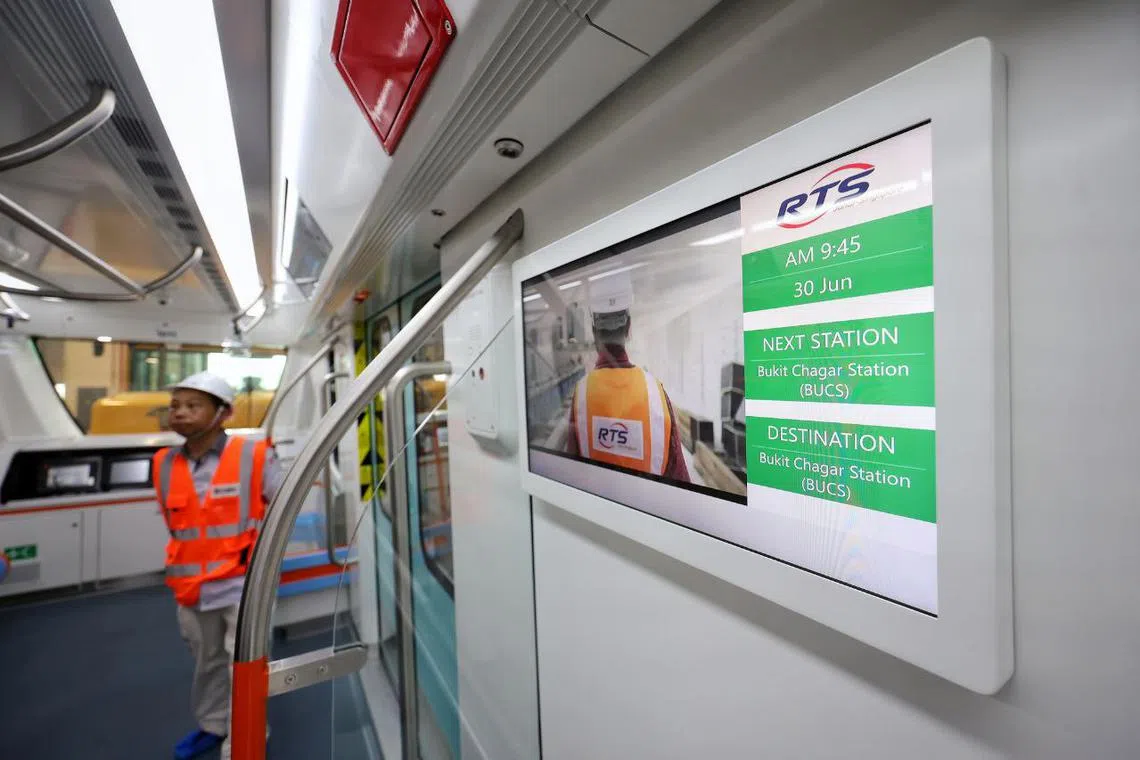
Display panels in the train will show the next station during a journey.
ST PHOTO: KEVIN LIM
Once completed, these seven trains will be sent directly to Wadi Hana depot in Johor Bahru for further testing before the 4km rail link opens.
The final train is expected to be delivered by December.
The contract to manufacture the RTS Link trains was awarded to CRRC in 2021.
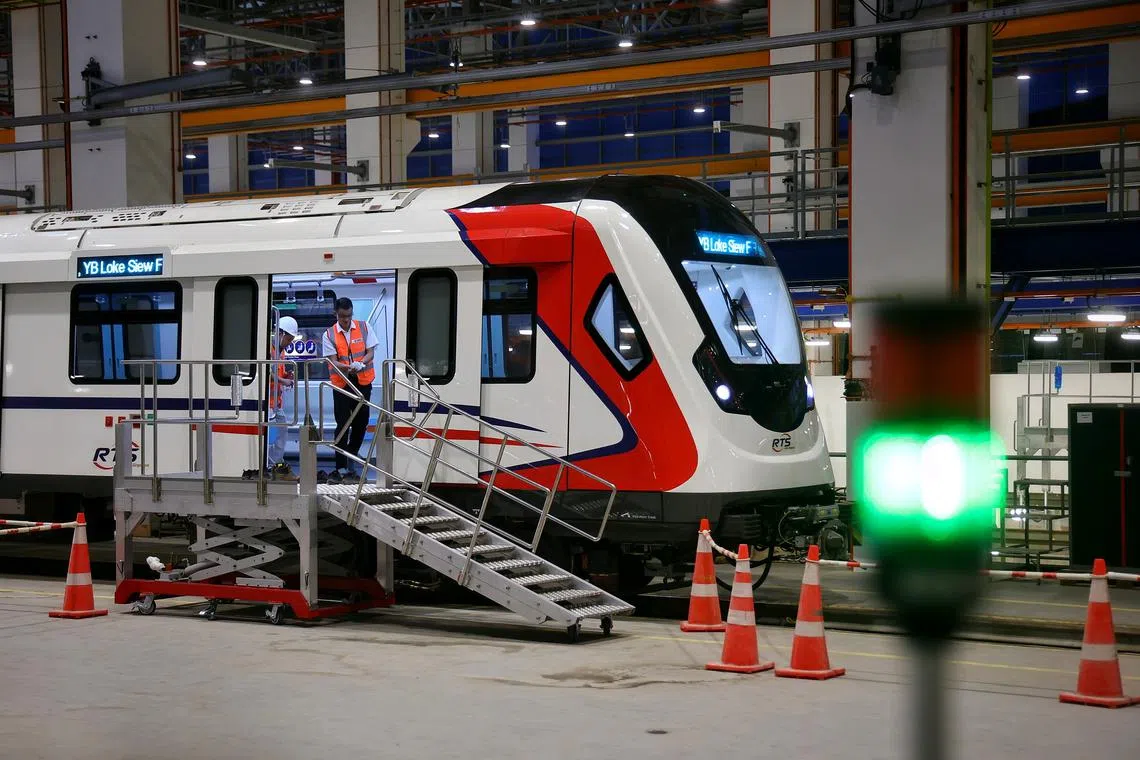
When operational, the RTS Link trains will travel at a maximum speed of 80kmh, carrying up to 10,000 people an hour in each direction.
ST PHOTO: KEVIN LIM
The original plan was for the cross-border link to connect to Singapore’s Thomson-East Coast Line (TEL), adopting the same systems and trains, and using the same depot as the TEL to reap economies of scale.
But the bilateral project was suspended in 2019 at the request of Malaysia, which proposed the use of a light rail system instead to lower costs.
The project officially resumed in July 2020 on revised terms.
When completed, the RTS Link is expected to ease congestion at the Causeway. More than 300,000 people cross the land bridge daily.
Kok Yufeng is a transport correspondent at The Straits Times.
